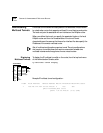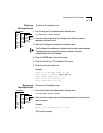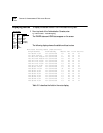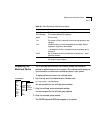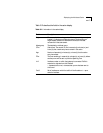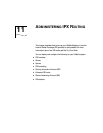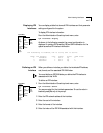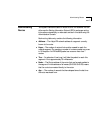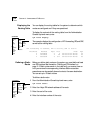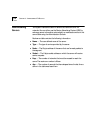
11-2 CHAPTER 11: ADMINISTERING IPX ROUTING
Administering
Interfaces
An IPX interface defines the relationship between an IPX Virtual LAN
(VLAN) and the IPX network. Every IPX interface has one IPX VLAN
associated with it. Each switching module has one IPX interface
defined for each subnet directly connected to it. You must first define a
VLAN, as described in Chapter 8: Administering VLANs, before you
define an associated interface.
An IPX interface has the following information associated with it:
■ IPX network address — The network administrator sets this 4-byte
address. Each address within the network should be unique.
■ Cost — This number, between 1 and 15, is used when calculating route
metrics. Unless your network has special requirements, such as the
need for redundant paths, you should assign a cost of 1 to each
interface.
■ Encapsulation format — IPX routing uses four Ethernet encapsulation
formats and two FDDI encapsulation formats. The Ethernet
encapsulation formats are Ethernet Type II, Novell 802.3 raw, 802.2 LLC,
and 802.3 SNAP. The FDDI encapsulation formats are FDDI 802.2 and
FDDI SNAP.
The two FDDI encapsulation formats correspond to the Ethernet 802.2
LLC and 802.3 SNAP encapsulation formats. If you select either of these
Ethernet encapsulation formats, the corresponding FDDI encapsulation
format is automatically selected for shared Ethernet and FDDI ports.
■ State — The status of the IPX interface indicates whether the interface
is available for communications (Up) or unavailable (Down).
■ VLAN index — The VLAN index indicates which bridge ports are
associated with the IPX interface. When the interface prompts you for
this option, it displays a list of available VLAN indexes and the ports
associated with them.



